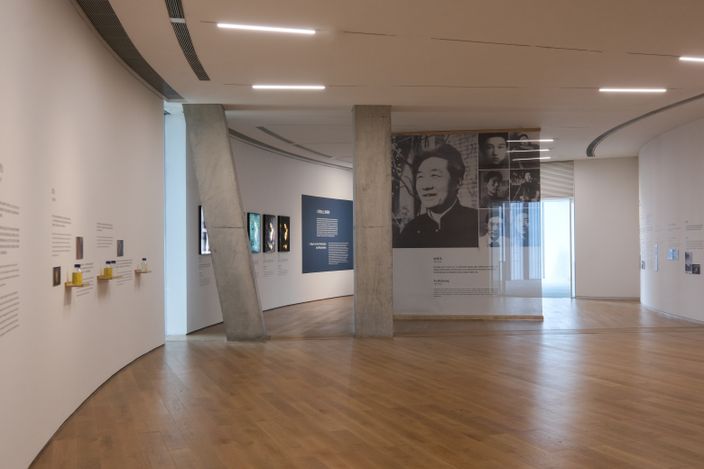
Exhibition view: Xu Beihong, From Details to Greatness: A Restoration and Research Exhibition of Xu Beihong’s Woman by the Window after Rembrandt ? HEM. Courtesy He Art Museum. Photo: Liu Xiangli.
As a master of modern painting, an art educator and the first President of the Central Academy of Fine Arts (abbr. CAFA), Xu Beihong has deeply impacted Chinese art history in the second half of the 20th century. In the 1920s, when there was no teaching of oil painting in China's education system, Xu Beihong was already exposed to Western painting and had received professional training. With continuous diligent study and training, he gained certain recognition in Europe. Known as Woman by the Window, the study copy of The Portrait of Hendrickje Stoffels was painted in Berlin in 1922. It bears witness to Xu's admiration of Western painting, as well as his determination to revival the Chinese art world using the Western system. Originally gifted to Xu's close friend Sun Peicang, the painting has travelled a long journey before being collected by He Art Museum. The exhibition uses Xu Beihong's studying of Rembrandt's The Portrait of Hendrickje Stoffels as a pivotal point to unfold the story behind the painting that reflects the changing times and personal destiny. On the 100th anniversary of the painting's creation, the work has undergone a series of restorations at the Guangdong Provincial Laboratory of Art Conservation and Material Research, and now returns to be exhibited in this special occasion. Following in the steps of the restoration technicians, we will go into the microcosm to witness the vastness of Xu Beihong's artistic career in its cosmos.
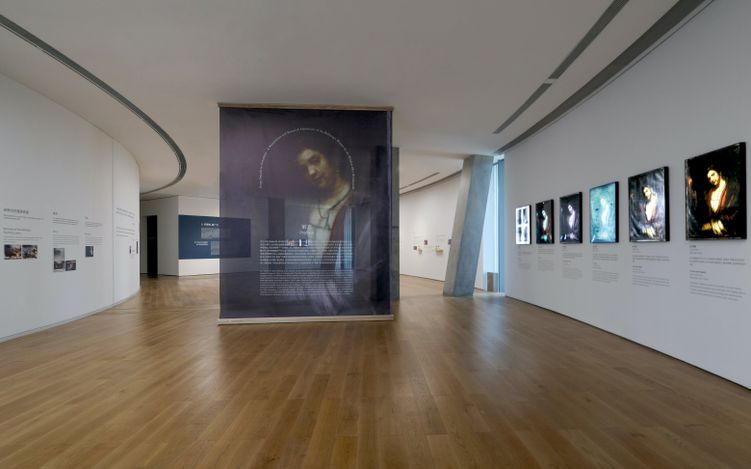

Exhibition view: Xu Beihong, From Details to Greatness: A Restoration and Research Exhibition of Xu Beihong’s Woman by the Window after Rembrandt ? HEM. Courtesy He Art Museum. Photo: Liu Xiangli.
Reports from the Restoration Table
Woman by the Window is an important work from the period when Xu Beihong was studying art in Europe. Rembrandt's handling of light and shadow in his paintings, his use of loose, flat and thick application of paint, all had a profound influence on Xu Beihong. Xu Beihong had mentioned that 'Rembrandt is my favorite at the time'. Through the years, Woman by the Window has been reframed, retouched, and repainted, all of which has left marks that affected its look and statues for future conservation. On the 100th anniversary of its creation, the oil painting restoration lab at Guangzhou Academy of Fine Arts utilises non-disruptive technologies such as infrared, UV, and X-ray imaging to diagnose the masterpiece from Xu Beihong. Physical methods are used to restore improper bracketing. With solubility tests, appropriate chemicals are selected to clean the old varnish and the retouched colour layer. Reversible materials are applied to fill the pigment layers. The restoration of the work is complete with the principle of minimal intervention by following the principle of identification to fill the missing parts of the pigments. In this chapter, we will join the restorationists in a journey back in time to experience the process of restoring paintings from the precise scope of science and technology.
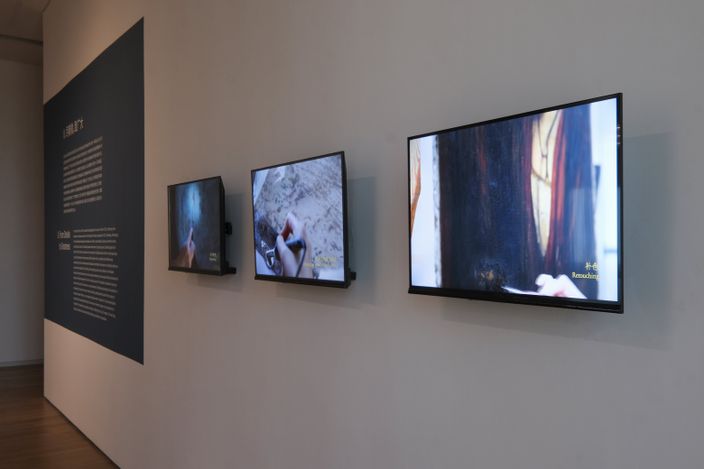
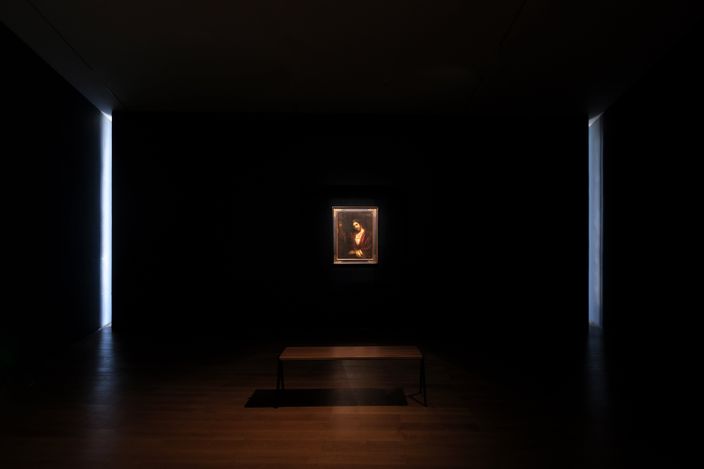
Exhibition view: Xu Beihong, From Details to Greatness: A Restoration and Research Exhibition of Xu Beihong’s Woman by the Window after Rembrandt ? HEM. Courtesy He Art Museum. Photo: Liu Xiangli.
From Details to Greatness
From arrival in Paris in 1919 as a stated-funded student to his return to China in 1925, Xu Beihong's time abroad was not always smooth. Due to the delay of the state's studentship in 1921, Xu Beihong, still studying at the Ecole Supérieure des Beaux-Arts in Paris, moved to Berlin, Germany, where the currency was devalued, and spent 22 relatively peaceful months there. During this period, Xu Beihong kept on his study with Arthur Kampf, the president of the Hochschule für Bildende Künste in Berlin. He had made study copies of the paintings in major museums and life drawings in the zoo, Woman by the Window was completed during this period. Represented by Woman by the Window, these series of oil painting studies are not only direct manifestation of Xu Beihong's refined painting skills, but also reflection of the Western influence of training methods such as study-copying and sketching on his early period. When he became the director of the Central Academy of Fine Arts, this artistic pursuit of 'From Details to Greatness' was put as the motto of the school. These words are a concise summary of Xu Beihong's philosophy of art education. In his teaching, he focused on the basic training of sketching, asking students to polish their accuracy by looking for exquisite 'details', so as to express the spiritual world of 'greatness' in the portrayed objects. Implementing his educational philosophy, Xu has nurtured a number of talents of art education for his motherland. This chapter brings together paintings by Xu Beihong, Dai Ze, Sun Zongwei, Li Hu and Zong Qixiang in an attempt to showcase Xu Beihong's lifelong contribution to art education.
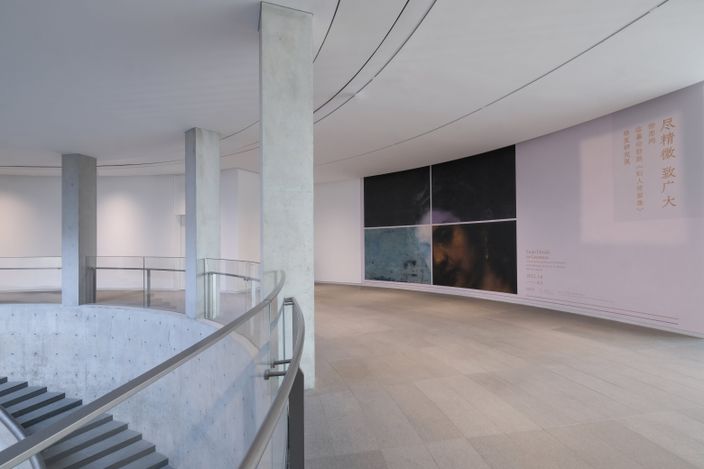
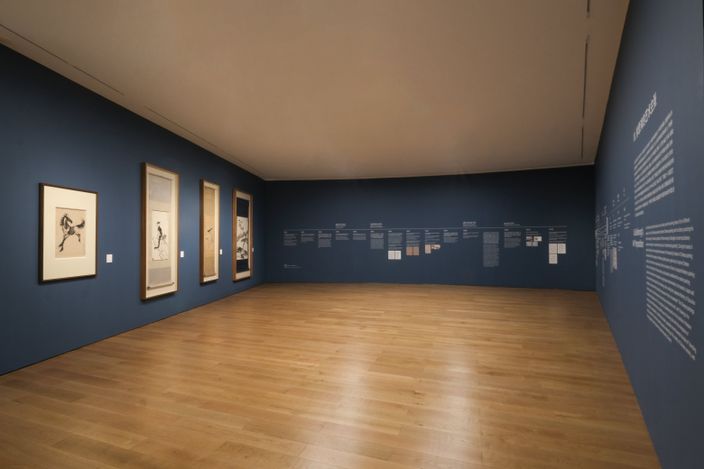
Exhibition view: Xu Beihong, From Details to Greatness: A Restoration and Research Exhibition of Xu Beihong’s Woman by the Window after Rembrandt ? HEM. Courtesy He Art Museum. Photo: Liu Xiangli.
Xu Beihong's Art Proposition
In Xu Beihong's long artistic career, one can clearly see the evolving ideas of his in different stages. As a child, Xu Beihong learned traditional Chinese painting with his father, practicing his father's teaching of 'imitate to perfection'. When working in Shanghai, he met revolutionary aspirants and began to encounter ideas such as 'revolutionising painting'. During his travels in Japan and Europe, he once again became aware of the decaying situation of Chinese painting and realised that the integration of Western painting was a great way to improve Chinese painting, hence the idea to study abroad. After his return to China, he adopted Western painting theory into the context the Chinese society, and basically established the realism painting approach as the basis of art education. Among these transformations, the travels to Japan and Europe were the most impactful to Xu Beihong. After visiting the Japanese Ministry of Education exhibition, and later with the training he received in Paris, he lamented: 'The Chinese paintings from the past are not refined and out control like a bridleless horse.' and 'Drawing is the foundation of all plastic arts.' For a long time, Xu Beihong held on to his position in Western painting, and the Westernising of painting was in full swing. But with the emergence of nationalism, some painters, Xu Beihong included, gradually moved towards the idea of 'blending the East and West', with their painting subjects reflecting of the reality of Chinese society, and the language of painting becoming predominantly Chinese.
About the exhibition
From Details to Greatness: A Restoration and Research Exhibition of Xu Beihong’s Woman by the Window after Rembrandt
Dates: 8 March–5 June, 2022
Venue: He Art Museum, Shunde
Address: No.6 Yixing Rd., Beijiao, Shunde, Guangdong, P.R.C.
Courtesy of He Art Museum.




























